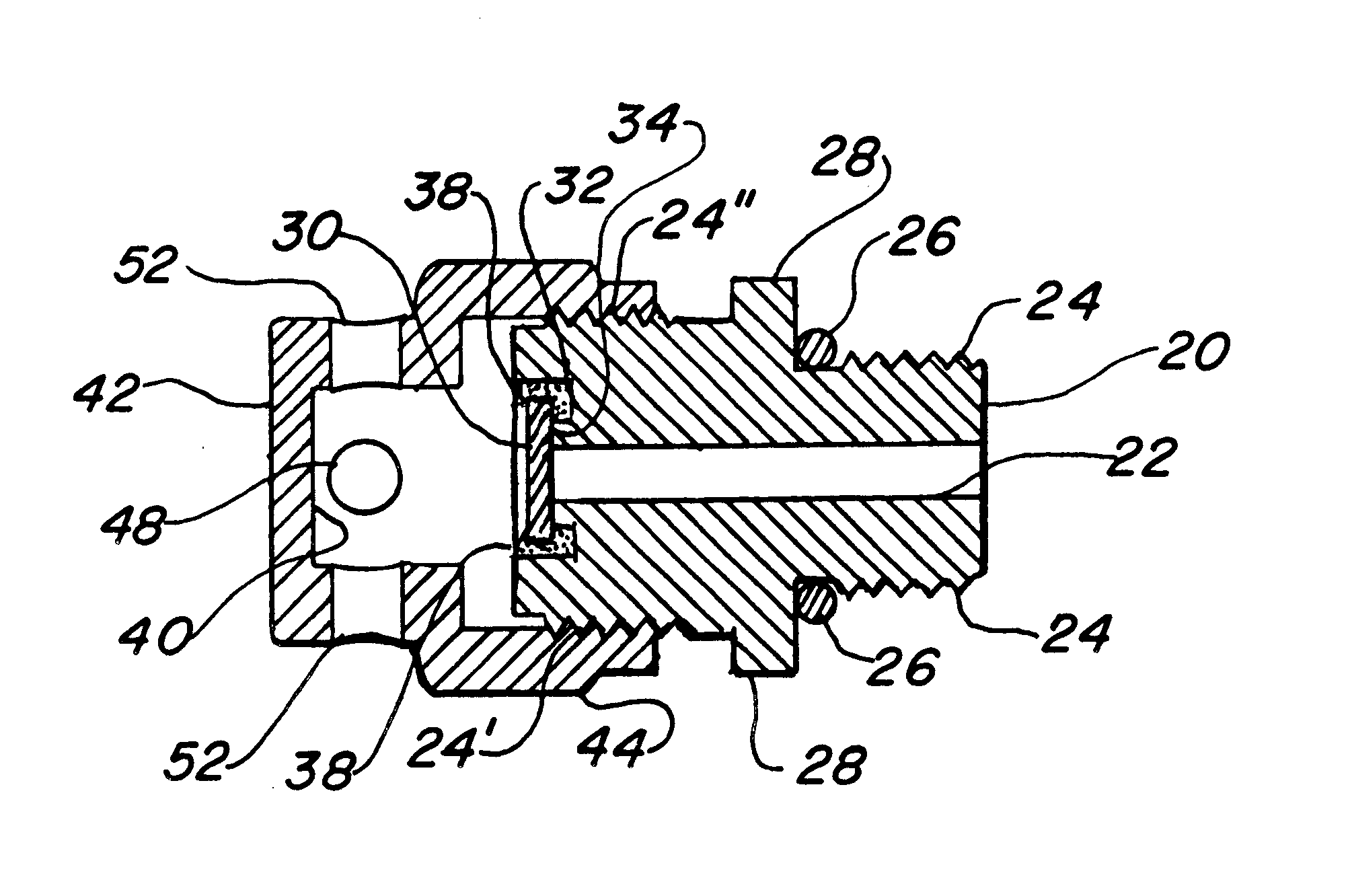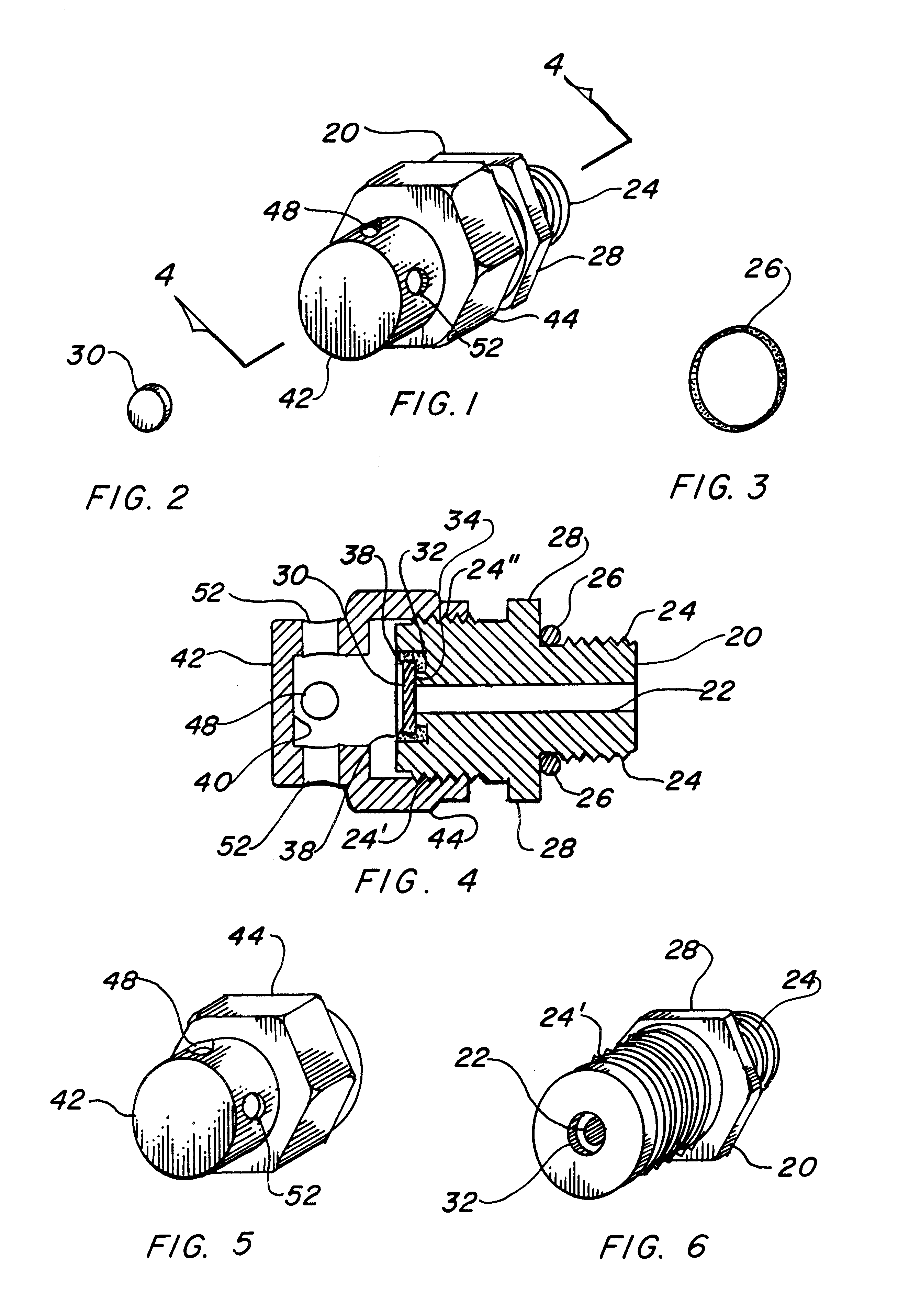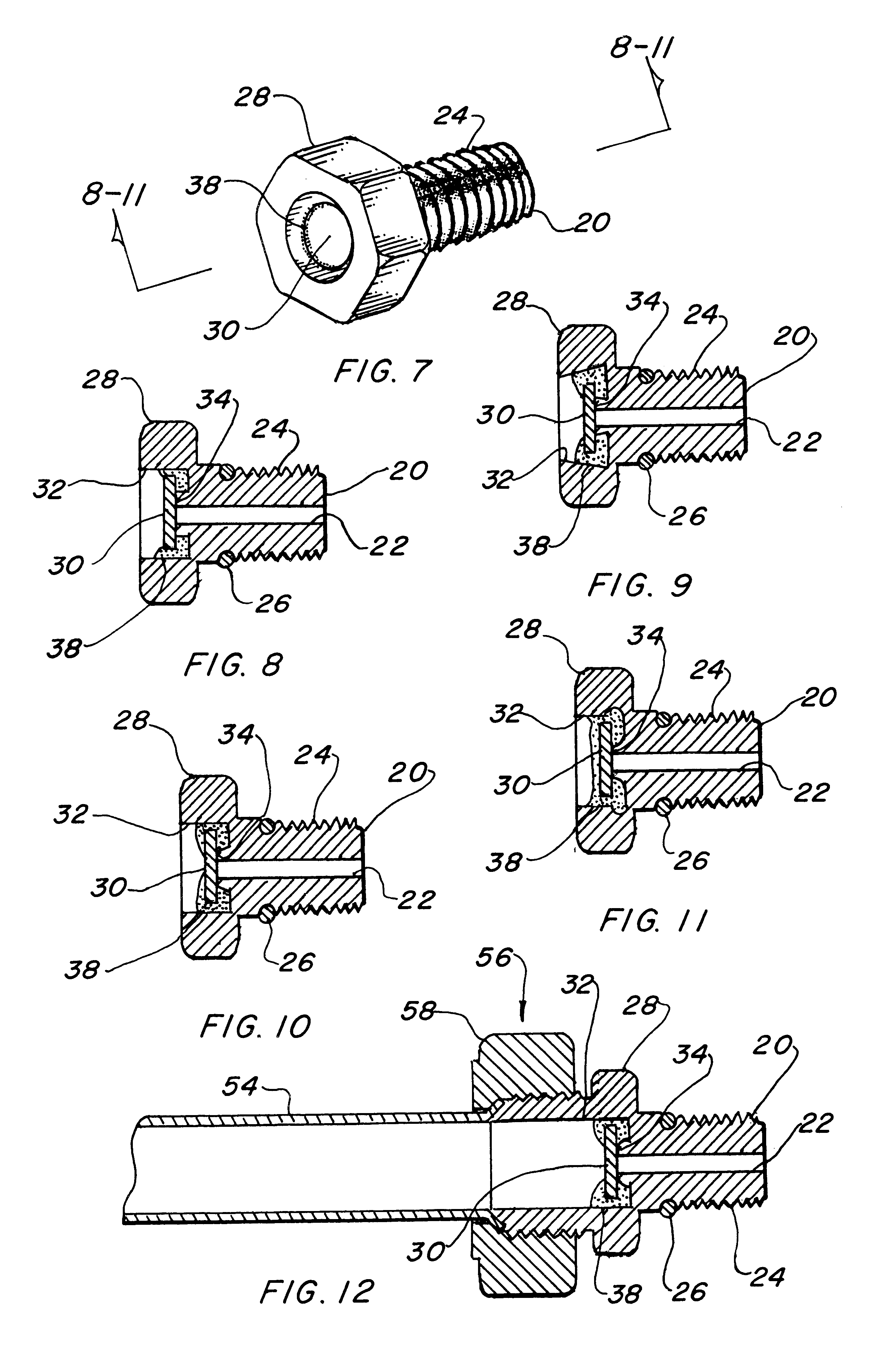Thermal-pressure relief device
- Summary
- Abstract
- Description
- Claims
- Application Information
AI Technical Summary
Benefits of technology
Problems solved by technology
Method used
Image
Examples
Embodiment Construction
The best mode for carrying out the invention is presented in terms of a preferred embodiment. The preferred embodiment is shown in FIGS. 1 thorough 12 and is comprised of an adapter 20 that contains an orifice 22 in the form of a hole or bore that penetrates the entire longitudinal axis. This orifice 22 is preferably positioned on the centerline, however any location is acceptable provided it continues though allowing communication with the fluid inside the pressure vessel. The adapter 20 has a first end and a second end with the first end configured in such a manner as to be connected through a pressure vessel wall in intimate contact with the working fluid stored inside. The orifice 22 provides a conduit for allowing fluid to escape in the event of excessive pressure within caused by external heat. The second end of the adapter 20 includes a circular recess cavity 32 larger in diameter than the orifice 22. The diameter and tolerance of the orifice may be selected by code requireme...
PUM
 Login to View More
Login to View More Abstract
Description
Claims
Application Information
 Login to View More
Login to View More - R&D
- Intellectual Property
- Life Sciences
- Materials
- Tech Scout
- Unparalleled Data Quality
- Higher Quality Content
- 60% Fewer Hallucinations
Browse by: Latest US Patents, China's latest patents, Technical Efficacy Thesaurus, Application Domain, Technology Topic, Popular Technical Reports.
© 2025 PatSnap. All rights reserved.Legal|Privacy policy|Modern Slavery Act Transparency Statement|Sitemap|About US| Contact US: help@patsnap.com



